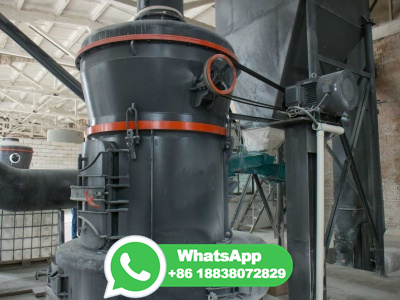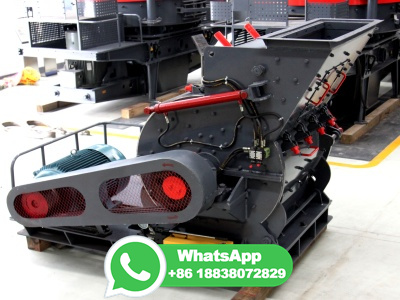
Put on rubber gloves, eye protection, and an apron. Carefully premeasure the ingredients. The solid oils into the pot, the liquid oils into a jug, the water into another heatproof jug, and the lye in another container. Prepare the recycled soap mold.
WhatsApp: +86 18203695377
To add charcoal to melt and pour soap, dilute it with about 3 times as much isopropyl (rubbing) alcohol, then stir into melted soap base. So for 1/2 teaspoon charcoal, you would mix it with 1 1/2 teaspoon alcohol. To keep the charcoal suspended in the soap, let the melted soap/charcoal mixture cool to under 135 degrees F (57C) before pouring.
WhatsApp: +86 18203695377
Soap design 2. Inthepot (ITP) swirls. Skill level: Easy. Mold: Loaf mold. Inthepot (ITP) swirl is also a simple soap swirl technique. The cold process soap mixture is divided into two or more parts, each dyed differently and, as the name implies, these are mixed 'in the pot' as opposed to in the mold.
WhatsApp: +86 18203695377
Try replacing up to 1/3 of the water amount in your recipe with mashed avocado. If your recipe calls for 9 ounces of water, try 6 ounces of water plus 3 ounces of mashed avocado. Blend the avocado into the warmed oils, before adding the lye solution. Thoroughly blend the avocado with an immersion blender, since large chunks can spoil in soap.
WhatsApp: +86 18203695377
For Cold Process Soap Thoroughly stir the clay, water, and essential oil mixture into the soap. Pour the soap batter into a prepared soap mold, cover with a sheet of wax paper, and then the mold's lid or a piece of cardboard. Tuck a towel or quilt around the mold to help hold the heat in. Let the soap stay in the mold for 24 to 48 hours, then ...
WhatsApp: +86 18203695377
Keep these considerations in mind while crafting your perfect cold process soap recipe, and experiment with different combinations of oils, designs, and features to create a truly unique and enjoyable bar of soap. Happy soap making! Mixing and Tracing Combining Ingredients. When making cold process soap, start by mixing your lye solution with ...
WhatsApp: +86 18203695377
Purchase options and addons. RAISE THE BAR on your shower with our sudstastic 3pack of cold process natural soap featuring a selection of manly scents including: Fresh Falls, Wood Barrel Bourbon, and Birchwood Breeze. NATURAL COLD PROCESS SOAP Made in the USA using a traditional cold process and with nourishing natural ingredients like ...
WhatsApp: +86 18203695377
Usually, I don't use more than 23% castor oil in cold process soap recipes. But, in this recipe, a slightly larger amount of castor oil adds lather and cleansing properties. It also helps draw moisture to the skin to keep it hydrated. The soap is formulated with a 15% water discount to prevent stickiness and help it release from the mold faster.
WhatsApp: +86 18203695377
The avocado butter is perfect for soothing and hydrating while being paired with sweet almond oil to heal and replenish. This is a perfect recipe for those with acne or stretch marks, and can naturally have a huge impact on the healing process. 2 oz avocado butter. 1 oz sweet almond oil. 1 oz shea butter. 7 oz coconut oil.
WhatsApp: +86 18203695377
Step 2. Place the container for mixing your lye on the scale, press tare, and make sure it says 0. Next measure the wateryou need oz of filtered water. Then carefully spoon the oz of sodium hydroxide into the water until the scale reads oz. Set this glass container aside to cool.
WhatsApp: +86 18203695377
Cold process soap is different than melt and pour soap. Cold process soap will not turn into liquid in the microwave and cant get a crust on top. However, you can use a rebatching technique on this soap. That involves grating the soap and putting it over gentle heat like a double boiler until the soap looks like mashed potatoes. I'll include ...
WhatsApp: +86 18203695377
Instructions. Measure out the lye and the water in separate, nonreactive containers, using a digital scale. Mix the lye and the water and stir until dissolved, adding the lye to the water, never the other way around. The lye solution will heat up as the result of a chemical reaction. Be careful of fumes, heat, and the corrosive solution.
WhatsApp: +86 18203695377
How to Add to Soap. Coffee Grounds. 1 tablespoon per pound of oils, use more or less depending on desired amount of exfoliation. Exfoliation color. You can toss coffee grounds in lye water to pull out color or simply add to oils before mixing in lye solution. Orange Peel Powder. 1 teaspoon per pound of oils, use more or less depending on ...
WhatsApp: +86 18203695377
This is a cold process and zerowaste soap recipe that makes use of drippings from cooked meat and includes instructions on how to render fat. The bars are pure white, ... This 1lb (454g) cold process recipe makes six bars when using the recommended cavity soap mold. Use the toggle below to double or triple the batch. The recipe also has a 5% ...
WhatsApp: +86 18203695377
Both cold process and hot process soap starts out being mixed the same way. The only difference is that cold process soap doesn't have extra heat applied, so needs 24 to 48 hours in a mold to finish the saponification process (the chemical reaction of soapmaking). Hot process soap is heated, usually in a crockpot, which speeds up that initial ...
WhatsApp: +86 18203695377
Make the Goat Milk Soap. Immerse a stick blender (immersion blender) into the pan and use it (turned off) to stir the contents together. Then bring the stick blender to the middle of the pan, hold it still, and pulse for a couple of seconds. Repeat the stirring and pulsing until the mixture begins to thicken.
WhatsApp: +86 18203695377
What Ingredients Do You Need for Cold Process Soap. Cold process soap is a specific soapmaking technique that combines plant or animal fats with sodium hydroxide (lye). The combination produces a chemical reaction called saponification, which is how the fat transforms into soap and the lye becomes neutralized. (1, 2) Basic ingredients for ...
WhatsApp: +86 18203695377
Once cold, add the frozen milk and allow to dissolve slowly into the lye solution. The goal is to keep the temperature as low as possible, and definitely below 100 degrees Fahrenheit, which will prevent discoloration. A variety of handmade goat's milk soaps. Photo by Melanie Teegarden.
WhatsApp: +86 18203695377
Cold process soap making does require some experience because of the chemistry and ingredients involved. If this is your first time, I have shared the steps along with photos to guide you in this post on how to make cold process soap. Hot Process similar to cold process. I make soaps infused with tea, beer, and wine using this method.
WhatsApp: +86 18203695377
Add the Lye and Whisk Stir. After mixing the essential oils well into the oils and pine tar, slowly add the lye solution to the pot. Do not use a stick blender; whisk the mixture together. After a few stirs with the whisk, the soap mixture will start to turn more opaque and a lighter color.
WhatsApp: +86 18203695377
The soap world now has at its fingertips the unlimited possibility of cosmeticcompliant, sugar free bath sprinkles that can be made in any color you have a mica for. The ability to create custom shapes is also an exciting option that I myself am continuing to explore, and as the recipe works its way into more and more hands I know that ...
WhatsApp: +86 18203695377
Activated Charcoal Soap Color Guide for Soapmakers. Activated charcoal usage rate: The standard recommendation for activated charcoal is to use 1/8 up to 1tsp of charcoal per pound of oil (PPO). This means that for every pound (454g) of oil in your formula, add anywhere from 1/8 to 1tsp of charcoal to obtain a range of grays to blacks.
WhatsApp: +86 18203695377
Traditional cold process soap recipes are fairly easy, techniquewise, but there are still quite a few steps involved and the soap has to cure for 30 days before use. Hot process soap cuts down some on the wait time, but it still much more labor and equipment intensive. As I hinted above, I am definitely the instant gratification type when it ...
WhatsApp: +86 18203695377
To help your soap unmold more quickly, add 1 teaspoon of table salt to the water before adding the lye. Warm your pine tar before adding it to the oils to help it dissolve more easily. To do this, place your pine tar in a small bowl, then place the bowl inside a large bowl. Pour hot water into the large bowl, and let it sit for 5 to 10 minutes.
WhatsApp: +86 18203695377
Once you're happy with the top of the soap, sprinkle lavender buds on the top of the soap. Spritz the top of the soap with 99% isopropyl alcohol. The soap needs to sit and harden in the mold for 23 days. It can be hard to wait, but it's worth it! After two days, pull the sides of the mold away from the soap.
WhatsApp: +86 18203695377
Add 1 tablespoon of distilled water and cover. Allow the soap to cook, stirring occasionally, until it has melted into a homogenous solution. Add olive oil, 1 ounce at a time, to the solution and stir well. Cook for an additional 15 minutes, then check the pH. Continue this process until the soap tests with a pH of 8.
WhatsApp: +86 18203695377